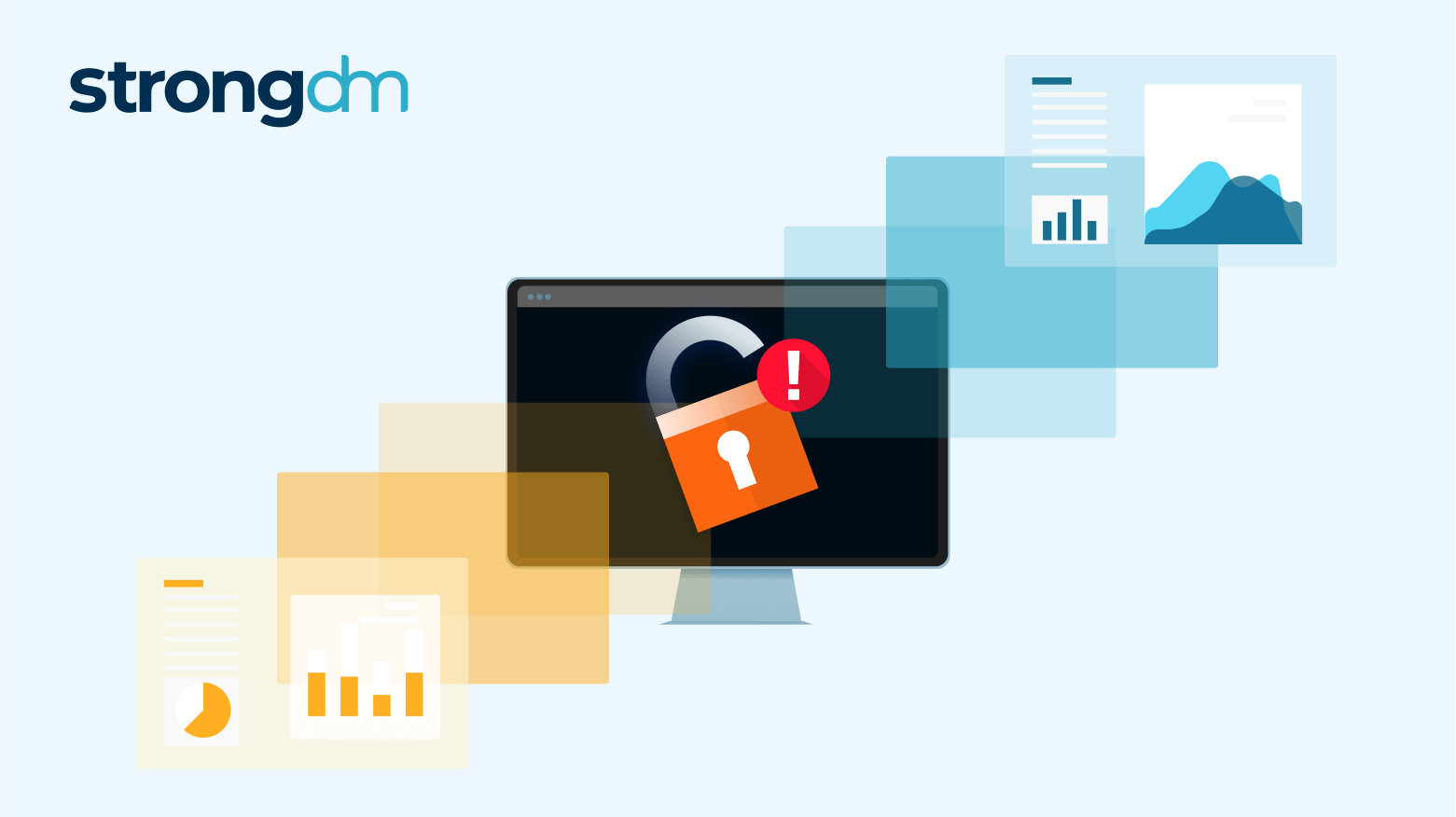Cyber Resilience: The Why, the How, and the Way to a Better Framework


Written by
Schuyler BrownLast updated on:
August 23, 2023Reading time:
Contents
Built for Security. Loved by Devs.
- Free Trial — No Credit Card Needed
- Full Access to All Features
- Trusted by the Fortune 100, early startups, and everyone in between
Everyday, cyber emergencies impact countless companies that increasingly rely on their online presence to do business. Preventative security is a crucial part of any cyber defense strategy, but, unfortunately, it’s not enough. A survival plan is needed to mitigate harmful impacts—like downtime, loss of business, high costs, and reputational damage—if an organization is blindsided by a successful attack or other disaster. Luckily, such a plan exists—it’s called cyber resilience. In this post, we’ll explain what cyber resilience is, why it’s important, and how to design and implement the best possible cyber resilience framework.
What Is Cyber Resilience?
Cyber resilience refers to an organization’s ability to keep operating in a cyber emergency. It helps prevent downtime and ensure business continuity when an incident, such as a cyber attack, occurs. It also prevents or mitigates the costs and reputational harm caused by data breaches and other disasters.
To achieve cyber resilience, organizations need cyber security controls—preventative, detective, and corrective—that allow for continued operations during disasters. For example, authorized parties must have access to critical systems even in the event of a cyber emergency. This allows an organization to maintain business operations while working towards recovery.
A number of cyber resilience frameworks exist which outline a lifecycle of resilience tactics and practices. For example, the cyber resilience framework of the Information Technology Infrastructure Library (ITIL) consists of these steps: strategy, design, transition, operation, and improvement. Through such a framework, cyber resilience is planned, practiced, and improved in a continuous cycle.
Importance of Cyber Resilience in the Modern Digital Landscape
The increasing frequency and sophistication of cyber attacks pose a serious threat to businesses and their critical infrastructure. The impacts on companies hit by a cyber attack are numerous and potentially severe; they include high costs, business disruption, exposure of sensitive data, and reputational damage.
- Costs: A data breach can cost even a small to medium-sized business between $120,000 to $1.24 million, according to recent research. A single attack may be enough to put some out of business. A cyber resilience plan can help companies recover faster from disasters and breaches, preventing or mitigating financial losses.
- Noncompliance: Businesses today collect sensitive data subject to strict regulations, such as the General Data Protection Regulation (GDPR), the California Consumer Privacy Act (CCPA), and the Florida Information Protection Act (FIPA). Failure to comply with these regulations may lead to hefty fines and legal action. Cyber resilience helps mitigate damage from breaches and also involves regular security hygiene and maintenance that helps companies find gaps that could lead to non-compliance.
- Business disruption and loss of reputation: If a company is breached, its money, data, and reputation are at stake. Cyber resilience is the best strategy for mitigating damage if an attack occurs. It allows a company to stay online, prevent loss of business, and also rapidly recover and return to normal operations.
Challenges and Threats Facing Organizations Today
An expanding attack surface and growing arsenal of attack types keep organizations struggling to upgrade defenses in time to avert a breach. In 2022, cyberattack frequency rose 38 percent globally compared to 2021, according to Check Point Research. Along with familiar threats—for example, ransomware, phishing, and zero-day exploits—remote work tools and AI are figuring in new attack types that companies may be unprepared for.
Common attack types
- Ransomware: Ransomware attackers employ malicious software to block access to important systems or data until a certain amount of money is paid. This familiar attack type is becoming increasingly sophisticated. Ransomware attackers in 2023 have employed encryption algorithms and other advanced tactics to carry out their crimes.
- Zero-day attacks: Zero-day attacks exploit vulnerabilities before security professionals have had time to discover and patch them. These attacks are particularly worrisome since it is hard for organizations to secure gaps they are unaware of.
- Phishing: Phishing attacks occur when cybercriminals send emails posing as a trusted sender, such as an employee or law enforcement body. The messages contain malicious links or attachments, leading, for example, to bogus websites that steal data or credentials from the target.
Trends providing greater surface area for cyber attacks
- Cloud services: Proliferating cloud services may feature security vulnerabilities that bad actors can exploit in order to enter a system and access sensitive data.
- IoT: Internet of Things (IoT) devices provide entry points for cyber attackers to access financial or PII data. As their numbers increase, securing them all may prove challenging.
- Remote work: The rise in attacks last year is attributed in part to hackers and ransomware gangs taking advantage of vulnerabilities in collaboration tools for remote workers, which provide a new attack vector. They include Slack, Microsoft Teams, OneDrive, Google Drive, and so forth.
- AI: Finally, experts predict that in the next year, we’ll see a rise in attacks enabled by advancing AI technology, such as Chat GTP.
The unpredictable nature of the threat landscape means that preventative measures are just the start. Organizations must prepare for the unknown with a cyber resilience plan that will help them survive if caught off guard.
Understanding the Cyber Resilience Framework
The National Institute of Standards and Technology (NIST), the Information Technology Infrastructure Library (ITIL), the Department of Homeland Security, and others have designed versions of a cyber resilience framework. All cyber resilience frameworks focus on the preventative, detective, and reactive measures in an organization’s IT security posture, with the aim of enabling business continuity in all events. They typically contain the following essential steps.
Key elements of cyber resilience
1. Risk Assessment and Identification
- Conducting regular risk assessments to identify vulnerabilities and potential threats.
- Prioritizing risks based on their potential impact on the organization.
2. Prevention and Mitigation Strategies
- Implementing robust cybersecurity software and tools, such as firewalls, antivirus protection, and intrusion-detection systems.
- Educating employees about cybersecurity best practices and instilling social-engineering awareness.
3. Detection and Incident Response
- Deploying real-time monitoring and threat-detection tools to identify suspicious activities as quickly as possible.
- Establishing an incident-response plan to contain and mitigate cyber incidents promptly and effectively.
4. Recovery and Business Continuity
- Creating comprehensive business continuity plans to restore operations following a cyber incident.
- Regularly testing and updating recovery plans to ensure effectiveness.
The role of access management in cyber resilience
- Proper access management plays a critical role in cyber resilience by controlling and monitoring user access to systems, applications, and data.
- Ensuring that only authorized personnel have access to sensitive resources reduces the attack surface and potential for unauthorized data breaches.
How StrongDM supports the cyber resilience framework
- StrongDM simplifies access management and reduces the risk of human error in granting or revoking permissions.
- The platform's centralized control enhances visibility and control over access to critical resources.
How To Improve Cyber Resilience With StrongDM
StrongDM has numerous features that strengthen and enhance the cyber resilience framework, including centralized access management, role-based access control (RBAC), detailed monitoring and auditing, and others. These features aid in every step of a cyber resilience strategy, from defense to business continuity, to rapid recovery.
Centralized access control
1. Managing users and access privileges
- StrongDM allows administrators to easily set up, manage, and revoke user access to all resources across their entire infrastructure.
- Role-based access control (RBAC) ensures that users have only the permissions required for their specific roles.
- Incident response teams have instant access to systems needed to mitigate downtime.
2. Implementing the principle of least privilege
- StrongDM enforces the principle of least privilege by restricting user access to the minimum necessary resources, reducing the potential for privilege abuse.
Secure access to critical systems and data
1. Multi-factor authentication (MFA)
- StrongDM supports MFA, requiring users to provide multiple forms of authentication before gaining access, adding an extra layer of security.
- This significantly reduces the risk of unauthorized access even if passwords are compromised.
2. Session monitoring and recording
- StrongDM records user sessions, allowing organizations to review and audit activities for potential security incidents or policy violations.
Auditing and compliance
1. Detailed activity logs
- Access grants are continuously monitored.
- StrongDM provides comprehensive logs of user actions and access attempts, aiding in forensic analysis and compliance reporting.
- When an incident occurs, improve the mean time to investigate (MTTI) with audit logs of every activity and query.
2. Meeting regulatory requirements with StrongDM
- StrongDM helps organizations adhere to various regulatory standards, such as NIST, HIPAA, and PCI DSS, by providing access controls and detailed audit trails.
Cyber Resilience: Frequently Asked Questions
What is a cyber resilience act?
A cyber resilience act is any action that enables business continuity and quick recovery in the event of a cyber emergency. This typically involves maintaining access to critical systems and data in order to prevent downtime.
For example, a cybercriminal gains unauthorized entry into a system using stolen credentials. Incident responders thwart the attacker’s advance by revoking all access to the compromised system. Investigators can view the audit logs of every activity and session. Response teams are granted authorized access to mitigate downtime and respond appropriately.
What’s the difference between cyber resilience and cyber security?
Cyber resilience is distinct from cybersecurity but works in tandem with it. Cybersecurity refers to tools and practices that prevent, detect, and respond to threats before an actual attack occurs. Cyber resilience, on the other hand, is a strategy for responding to a successful attack in order to recover rapidly while ensuring business continuity.
Conclusion
With attack types always evolving, organizations can’t place 100 percent confidence in preventative security. They must prepare for the unexpected with a cyber resiliency plan that will keep businesses running even if they are successfully attacked. It is vital in order to prevent costly downtime, protect their reputation, and keep their customers’ trust. StrongDM strengthens your cyber resiliency framework, ensuring you stay afloat in a security emergency while you navigate your way to safety.
See StrongDM in action, book a demo.
Next Steps
StrongDM unifies access management across databases, servers, clusters, and more—for IT, security, and DevOps teams.
- Learn how StrongDM works
- Book a personalized demo
- Start your free StrongDM trial

Categories:

About the Author
Schuyler Brown, Chairman of the Board, began working with startups as one of the first employees at Cross Commerce Media. Since then, he has worked at the venture capital firms DFJ Gotham and High Peaks Venture Partners. He is also the host of Founders@Fail and author of Inc.com's "Failing Forward" column, where he interviews veteran entrepreneurs about the bumps, bruises, and reality of life in the startup trenches. His leadership philosophy: be humble enough to realize you don’t know everything and curious enough to want to learn more. He holds a B.A. and M.B.A. from Columbia University. To contact Schuyler, visit him on LinkedIn.
You May Also Like




